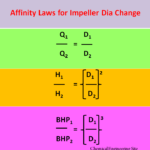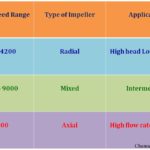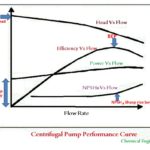Centrifugal pump Affinity laws are set of mathematical equations correlating the Flow Rate, Head, Brake Horse Power, Speed and Impeller Diameter of the pump. Pump efficiency is considered as a constant and variation in speed and impeller diameter is analyzed for the variation in above said parameters. Using the new set of data derived from pump affinity laws a new set of pump … [Read more...]
Pump Specific Speed Calculation
Pump Specific speed is a dimensionless number used in design. Specific speed is used to find out the geometry of the impellers and it is helpful in identifying the type of impeller to be selected for particular application. Formula for Calculation of Pump Specific Speed Specific speed of the pump is calculated with the help of the formula: Ns = (N * √Q )/ … [Read more...]
Test Your knowledge on Pumps – Online Quiz
Pumps are the important equipment in Chemical Process Industries. Centrifugal and Positive Displacement pumps are widely used in Chemical Industry for variety of application. This online test module on Pumps will help you to enrich your knowledge about Selection, Application and Operating knowledge on Pumps. Its time to take pump quiz to test your knowledge on pumps … [Read more...]
Understanding Centrifugal Pump Curve
For an Operations Engineer who is working in a Chemical Process Industry or a Process engineer who is involved in Hydraulic calculations understanding the Centrifugal Pump Curve is an important aspect. Let us discuss in detail here. Components of Centrifugal Pump Curve Head Vs Flow Curve : H-Q Curve Efficiency Vs Flow Curve: Efficiency Curve Brake Horse Power Vs … [Read more...]
Centrifugal Pump Efficiency Calculation
Centrifugal pump efficiency is the ratio of Hydraulic power delivered by the pump to the brake horsepower supplied to the pump. Hydraulic Power (Power Output from Pump): Centrifugal Pump consumes energy to develop the discharge pressure and to deliver flow. Therefore Hydraulic Horsepower of the Pump depends on these two parameters. Power Output from Pump = (P2 – P1) * … [Read more...]



